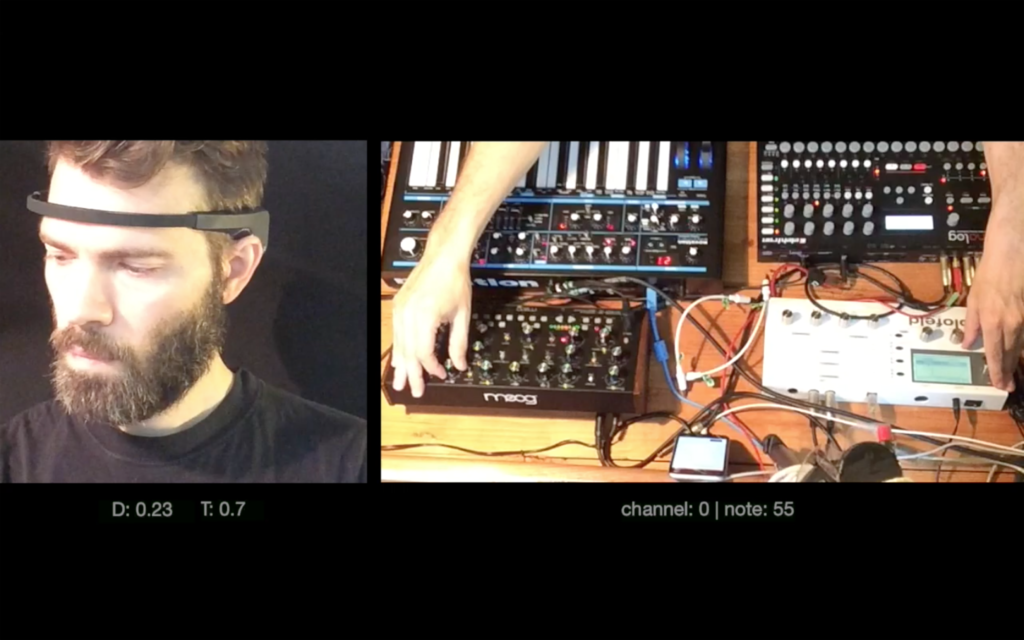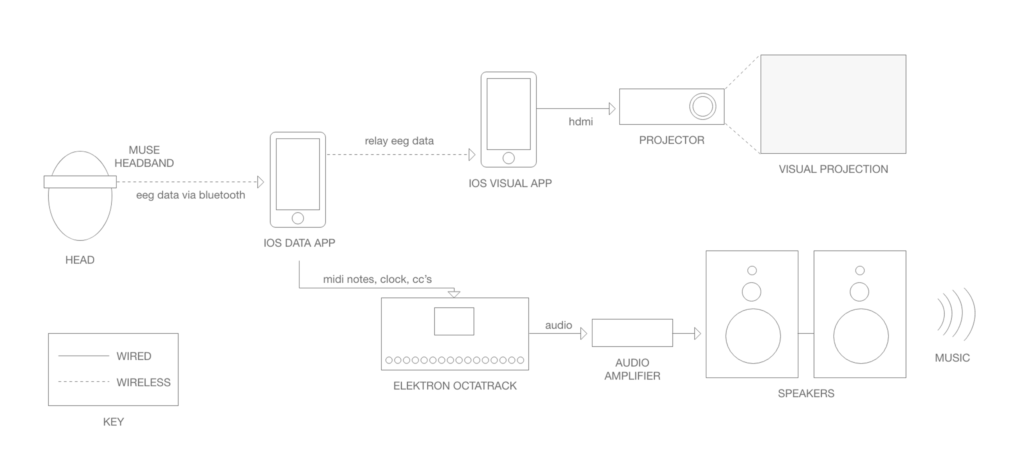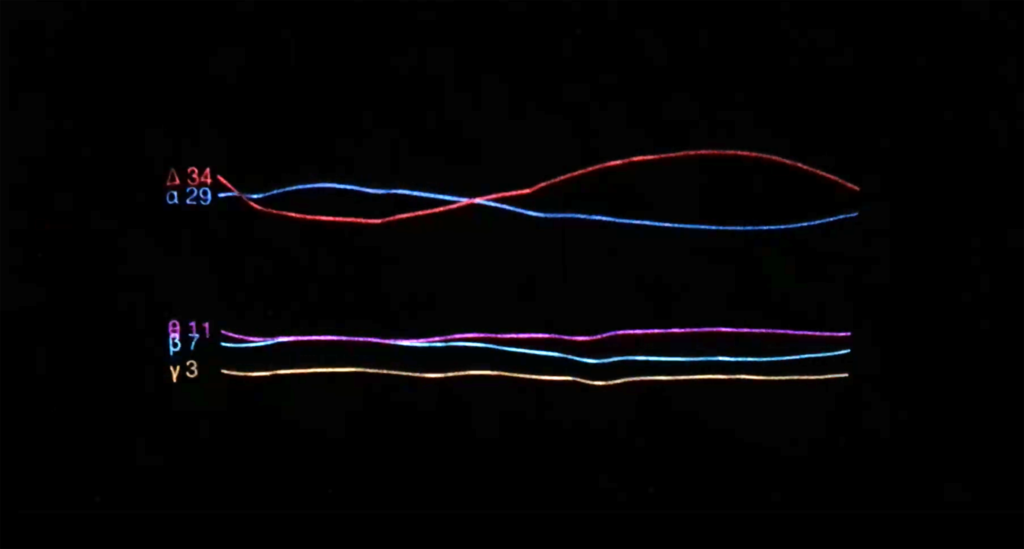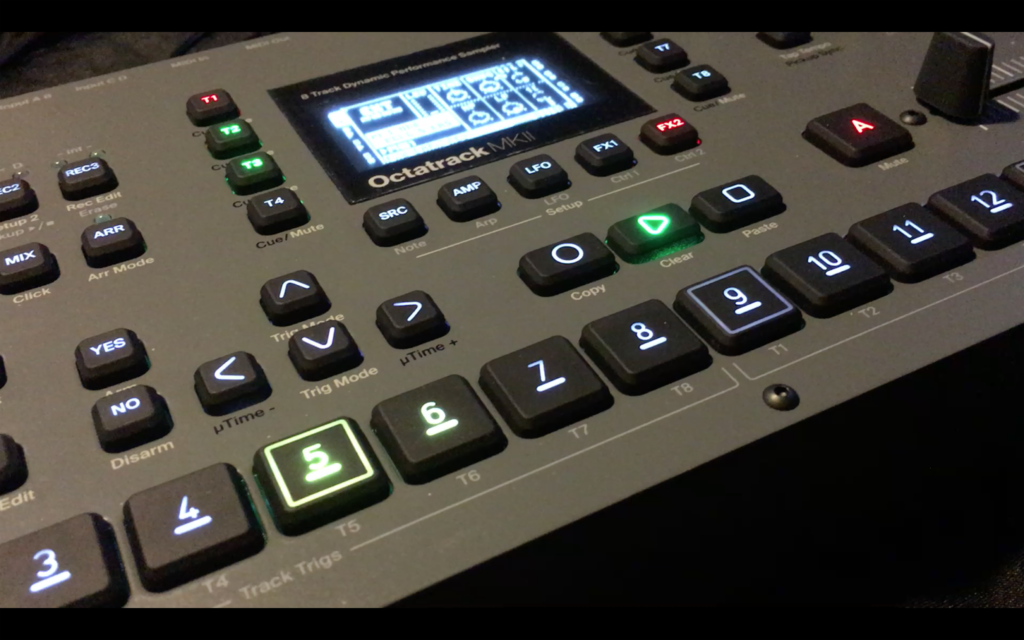Brain Trust: Performing Biodata with Jason J. Snell
by Patrick J. Reed

Approach Cedar Rapids, Iowa from the south via I-380, and you will find a city center framed in spare geometry. A Quaker Oats factory occupies the northern point of the district with grain elevators and a freight yard that appear unchanged since World War II. The highway bends around the factory, corralling it to one side. Opposite rise concrete embankments, emergency hospitals, a Masonic Temple, and the Hotel Roosevelt, where one man was murdered by another decades ago in room 729.1 The Cedar River divides Cedar Rapids; it is the source of the city’s drinking water, the city’s name, and thrice the city’s destruction, having flooded in 1993, 2008, and 2016. Sound artist Jason J. Snell calls Cedar Rapids home.
He calls other places home, too. New York City is one, and Los Angeles another, where he spent most of his adult life until recently adding Berlin to the list. And just as he has many homes, he has many names: Bombardier, The 5th of July, and The Space Where She Was are a few, each meant for a different project, performance, or personae.
On February 6, 2019, I spoke to Snell, then simply “Jason.” Our meeting was one in a series of formal and informal conversations about his work, ongoing since 2015.2 At the time of the interview, the space where he was—where he worked—happened to be a second-story bedroom in his parents’ home in Cedar Rapids, a house surrounded by trees and snow, some miles from the floodplains and hotel room 729.
“The simplicity of being here is great for ‘R’ and ‘D,’” Snell said. He prefers a familiar context for implementing new ideas. “The Iowa connection has helped [to] start things…in a way that would just be different if it were in LA or New York or Berlin. It feels more personable, and I have roots here that go…way back.” The research and development to which Snell refers concerns his most intimate project to date: Primary Assembly (2019), a machine network that, per a blurb on his website, enables him to compose music with his thoughts.
This description conjures Sci-Fi fantasies of a savant loner toiling away in secret chambers—a provocative image, but one that glosses over the technology that makes Primary Assembly’s operations something less than telepathy and more than mind control. During our talk, I came to realize this slight descriptive finesse spares the reader a steep descent into a hole where neurology, computer coding, and electronic music commingle.
Grasping the basics of these sciences requires study, and to understand how they work together requires a specific mentality. Snell prides himself on his ability to move between music and engineering. “Not everyone is built to be an innovator, and I don’t know why I am,” he said in a promotional interview for VoyageLA, “I sit in a very unique overlap, because an engineer can build something that works, but [is] not necessarily beautiful, and an artist or musician has the vision, but may not have all the technical skills necessary to create the project.”3 Primary Assembly demonstrates his ingenuity.
Using a commercially available neurofeedback headband called Muse, Snell initiates a musical procedure with a series of electrical flows from his brain. Muse’s most prominent feature, and the one most important to Snell, is its electroencephalographic (EEG) software, which allows regular users to observe their neural oscillations, or brain waves, in a colorful mobile app. Snell diverts the wireless EEG signal from the Muse headband to his own custom-coded iPhone app that “crunches the numbers” and converts this information into Musical Instrument Digital Interface (MIDI) commands that are cabled into an Elektron Octatrack, “a dynamic performance sampler ideal for real-time sampling, remixing and audio manipulation.”4 From there, audio signals pass to an amplifier and out through speakers.

Each brain wave read by the EEG is responsible for triggering a specific musical element, like notes and volumes, and the properties of each element are determined by the relationship between the different brain waves at any given moment. Since the brain is always active, brain waves are always changing, which means a constantly changing EEG data and a constantly evolving soundscape. I asked Snell about his knowledge of the human brain before his work on Primary Assembly. He admitted that it has been a learning process, but one bolstered by a longtime meditation practice and a close relationship with the Muse itself, meaning a close relationship with his own thoughts.
Marketed as a necessity for living a more centered life, the Muse device and affiliated mobile app collects biodata in order to improve the customers’ meditation routines. Visit choosemuse.com, the official site for all things Muse, and it will tell you to “stop guessing if you are doing it right. Use real-time feedback to guide you and keep you motivated during your meditation practice.”5 The legal fine print explains that the device’s sensors collect “data including without limitation electrical activity of the brain, muscle activity, heart rate, heart rate variability, motion, respiration rate, eye movement and other signals.”6
The website choosemuse.com will also tell you “brainwaves come in five flavors, each of which corresponds to a Greek letter.”7 Beta flavor, more commonly known as the beta wave, is associated with an intensely focused mental state. Theta waves, on the other hand, are associated with daydreaming. Snell’s favorite flavors for Primary Assembly tend to be alpha and delta. They are associated with reflective states and dream states, respectively.8 And gamma waves? Buddhist monks cornered the market on those.9
On a whim, I asked Snell if the technology of Primary Assembly could ever be weaponized—I was thinking of something akin to a sonic nausea device or an acoustic heterodyne ultrasound weapon—and he entertained various speculations with deference to my conspiratorial digression. A realization came later, however, that I missed the mark; the weaponizing potential lies in the information.
Muse is not the only product of its kind to collect biodata from its users, but its manufacturer, InteraXon, “a Toronto-based innovator in the field of brain-sensing technology, with a history of designing memorable experiences from a levitating chair to a brain powered beer tap,” scores higher on the “good ethics” scale than its competitors. Muse users can delete their biodata profiles at any time according to InteraXon’s legal statement.10 It might take up to 30 days, as the InteraXon customer service representative informed me, but she claimed deletion will happen.

EMOTIV, a similar neurofeedback gadget that encourages you to “unlock the power of your mind with affordable brain sensing technology” offers fewer options.11 The third item under the “Your Privacy Choices” section of EMOTIV’s privacy policy reads: “with the exception of your EEG Data, you can request that we erase some or all of your Personal Information from our systems. We retain your EEG Data for scientific, medical, or historical research purposes.” A withdrawal of consent for EMOTIV to process personal information is also limited: “If you withdraw your consent, your EEG Data may still be used by us and shared with our third-party service providers to provide and improve our Services and shared as aggregate information that does not identify you as an individual.” To their credit, they promise to keep personal identification information separate from the personal data they keep forever.12
I spoke with neurophysiologist and science communicator Dr. Kiki Sanford about bioinformatics companies and the ramifications of having EEG data stored for future use. She explained that, although brain waves have globally recognized patterns, each person’s specific patterns are individual, and therefore constitute personally identifying information. “Brain waves are like fingerprints,” she told me. I asked what might happen if companies like InteraXon or EMOTIV were to dissolve the policies protecting users’ privacy vis-à-vis their EEG data. Her immediate concern was for the legal precedents that could be established, precedents that could, for example, allow this information into legal proceedings determining a person’s psychological fitness for a job or parental custody. “If brain waves are indicative of you being anxious or having aggression or personality traits seen as being negative in a certain light,” she said, “this could be used against you down the road. It is the opposite of [the film] GATTACA. Instead of DNA being used, it is your brain print being used.”
Dr. Sanford’s comments resonated eerily with Snell’s own misgivings about Primary Assembly.13 For his debut performance, presented by Yellow Door Gallery in January 2019 at an art space named Art Terrarium in Des Moines, Iowa, Snell created a light show that projected graphic representations of his EEG readings onto his face and body; both were generated in sync and in real time with the music. He felt exposed. “There is a vulnerability in having my biodata projected on a screen and coming out of the speakers,” he said. For this reason, and because he could not predict what his brain would do “knowing people [were] there while going through different mental states,” he wanted a small audience. But over 100 people attended to witness him sit on the floor and navigate machines like a spiritual medium (a comparison he happily accepts). The show was, much to his relief, a success, but it left him wondering about the feasibility of grander future performances when the pressures would be greater and the variables less predictable.

Other artists wielding EEG technology have come before Snell, most notably composer Alvin Lucier, who used EEG in his groundbreaking percussion work Music for Solo Performer (1965); Lisa Park, whose EEG work in Eunoia (2013) vibrated dishes filled with water; and Masaki Bathoh, whose esoteric album Brain Pulse Music (2012) is dedicated to the victims of the 2011 Fukushima disaster. Snell enjoys good company with this brain trust, but he considers himself distinguished by his ambition and taste. He finds most other EEG art either too acoustically experimental or too strong an avant-garde statement. With Primary Assembly, he is shooting for mainstream appeal. He plans to produce a show equivalent in duration and production value to the longer techno sets he plays as a DJ, and one that provides an immersive and contemplative experience for his audience.
That January night, in Des Moines, he performed his biodata for fifteen minutes. It was exhausting, but Snell plans to train to endure a performance three times as long. In time, the artist wants to fully utilize all neural oscillations at once—alpha, beta, gamma, delta, and theta. “I have these five brain waves to work with…and the way I am looking at [them] now is that [they are] actually a family…Five entities that all have relationships to each other.” Sounds like a full house to me. Jason J. Snell, welcome home.
- Nebbe, Charity. “Murder at the Roosevelt Hotel in Cedar Rapids, Still Remembered after 68 Years.” In Talk of Iowa. Iowa Public Radio. August 10, 2016.
- I first met Snell at a paper store in an alley by a gay bar in Iowa City, but it was not until we both lived in Berlin when I became aware of his work as a DJ and a sound artist.
- VoyageLA Staff. “Meet Jason J. Snell of Primary Assembly in Silver Lake.” VoyageLA, January 2, 2019.
- Octatrack DPS-1: Dynamic Performance Sampler User’s Manual (Elektron Music Machines MAV AB, 2018) 10. Accessed February 21, 2019.
- “Muse™.” Meditation Made Easy with the Muse Headband. Accessed February 18, 2019. https://choosemuse.com/.
- “End User License Agreement, “ InteraXon. Accessed February 21, 2019. https:// choosemuse.com/legal/.
- “Muse™.” Meditation Made Easy with the Muse Headband. Accessed February 18, 2019
- “A Deep Dive Into Brainwaves: Brainwave Frequencies Explained.” Muse. June 25, 2018. Accessed February 18, 2019.
- Kathy Gilsinan, “The Buddhist and the Neuroscientist,” Health, The Atlantic online, July 4, 2015. Accessed February 21, 2019.
- “End User License Agreement, “ InteraXon. Accessed February 21, 2019.
- “Self Quantification Solutions.” Emotiv. Accessed February 18, 2019.
- “EMOTIV Privacy Policy,” EMOTIV, last modified May 25, 2018. Accessed February 21, 2019. https://id.emotivcloud.com/eoidc/privacy/privacy_policy/. EMOTIV’s privacy policy states that the company collects “electrical biosignals collected using EMOTIV devices and any related monitoring equipment, motion sensor outputs, associated data such as event timing markers, mouse, touchscreen, gestural, and keyboard events, eye movements, survey responses, choices, and preferences, tactile, audio, visual, and other sensory stimuli, reaction times, self-assessment, and cognitive performance.” The company promises to keep identifying information separate from EEG data, but they still “share individualized and aggregated EEG Data with third parties for scientific, medical, and historical research purposes.”
- “Primary Assembly,” a term derived from DNA research, is a nod to both bioinformatics and to Snell’s interest in the human genome. Snell uses human DNA structures as a map for composing musical scores—an idea that came to him in a dream.